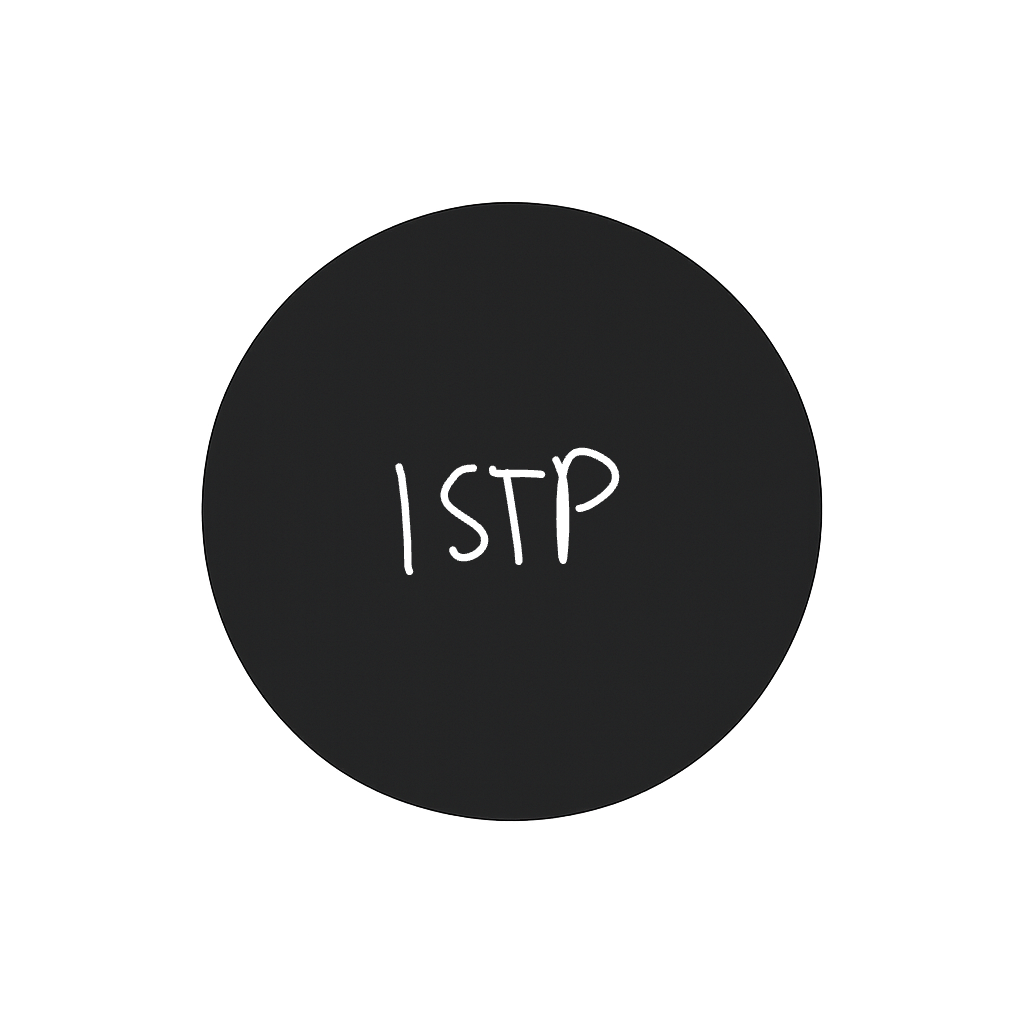The ISTP personality type, as defined by the Myers-Briggs Type Indicator (MBTI), is known for its practical problem-solving skills, independence, and adaptability. Understanding the interplay of its cognitive functions—Introverted Thinking (Ti), Extraverted Sensing (Se), Introverted Intuition (Ni), and Extraverted Feeling (Fe)—provides valuable insights into how ISTPs perceive the world, make decisions, and interact with others. Below is a comprehensive breakdown of these functions individually and in combination.
ISTP Cognitive Functions Overview
Dominant Function: Introverted Thinking (Ti)
Role: Ti is the primary lens through which ISTPs understand the world. It allows them to analyze information, create logical frameworks, and understand how things work on a fundamental level.
Characteristics: Analytical, logical, precise, focused on internal consistency, and interested in understanding the mechanics of systems.
Auxiliary Function: Extraverted Sensing (Se)
Role: Se helps ISTPs take in and respond to their immediate environment, making them highly aware of sensory details and adept at navigating the present moment.
Characteristics: Observant, action-oriented, spontaneous, adaptable, and focused on the present.
Tertiary Function: Introverted Intuition (Ni)
Role: Ni allows ISTPs to see underlying patterns and consider potential future outcomes, providing a deeper level of insight beyond the immediate situation.
Characteristics: Visionary, insightful, abstract, focused on future implications, and interested in exploring deeper meanings.
Inferior Function: Extraverted Feeling (Fe)
Role: Fe helps ISTPs connect with others emotionally, understand social dynamics, and consider the needs of those around them.
Characteristics: Empathetic, socially aware, concerned with others’ feelings, and focused on creating social harmony.
Interactions Between Cognitive Functions
Understanding how these functions interact can illuminate the complexities of the ISTP personality. Here’s a detailed look at each pairing and combination:
Ti + Se (Dominant + Auxiliary)
Synergy: This combination allows ISTPs to take in sensory information from their environment and analyze it logically. Ti drives their desire to understand systems, while Se provides the real-time data they need to test and refine their understanding.
Application: ISTPs often use Ti to solve problems and Se to gather the necessary information, making them skilled at troubleshooting and hands-on problem-solving.
Ti + Ni (Dominant + Tertiary)
Balancing Analysis with Insight: Ti drives logical analysis, while Ni helps ISTPs see deeper patterns and consider long-term implications.
Application: Developing Ni can help ISTPs add a layer of strategic thinking to their analytical pursuits, allowing them to anticipate future outcomes and make more informed decisions.
Se + Fe (Auxiliary + Inferior)
Balancing Action with Social Awareness: Se drives action and sensory engagement, while Fe helps ISTPs connect with others and understand social dynamics.
Application: Developing Fe can help ISTPs ensure that their actions are considerate of others’ feelings, making them more effective in social situations and improving their relationships.
Ti and Fe (Dominant and Inferior)
Balancing Logic and Empathy: Ti emphasizes logical analysis, while Fe ensures that decisions consider the emotional impact on others.
Challenge: ISTPs may struggle to express their emotions or connect with others on an emotional level, as Fe is their least developed function.
Growth Opportunity: Developing Fe can help ISTPs enhance their interpersonal relationships and ensure that their logical insights are communicated in a compassionate manner.
Se and Ni (Auxiliary and Tertiary)
Balancing Present Focus with Future Vision: Se’s focus on the present can sometimes overshadow the need for strategic foresight emphasized by Ni.
Challenge: ISTPs may struggle to consider long-term consequences, leading them to act impulsively without fully considering future outcomes.
Growth Opportunity: Developing Ni can help ISTPs integrate their present focus with a sense of future direction, ensuring a more balanced approach to decision-making.
Practical Implications for ISTPs
Strengths
- Hands-On Problem-Solving: ISTPs excel at understanding how things work and finding practical solutions, making them resourceful and effective in dynamic environments.
- Adaptability: Se helps ISTPs respond quickly to changes in their environment, making them flexible and action-oriented.
- Logical Analysis: Ti enables ISTPs to break down complex systems and understand them on a fundamental level, ensuring their solutions are both practical and logical.
- Independent Thinking: ISTPs are driven by an internal sense of logic, allowing them to solve problems independently and think critically.
Challenges
- Difficulty with Long-Term Planning: Ni, being less developed, can make it challenging for ISTPs to consider future implications or develop long-term strategies.
- Struggle with Emotional Expression: Fe, being the inferior function, can make it difficult for ISTPs to express their emotions or understand the emotional needs of others.
- Balancing Logic and Empathy: Ensuring that decisions are both logically sound and considerate of others’ feelings can sometimes be a delicate balance.
- Avoiding Impulsivity: Focusing too much on immediate experiences may cause ISTPs to act impulsively without considering future consequences.
Growth Strategies
- Enhancing Ni: Engaging in activities that encourage strategic thinking and long-term planning, such as setting personal goals or reflecting on future possibilities, can help strengthen Ni.
- Developing Fe: Practicing empathy and actively considering others’ feelings can help ISTPs develop Fe, aiding in more effective communication and relationship-building.
- Balancing Action with Reflection: Making a conscious effort to reflect on past experiences and future goals ensures a more holistic approach to decision-making.
- Managing Impulsivity: Learning to pause and consider potential consequences before taking action can help ISTPs make more informed decisions.
Conclusion
The ISTP’s cognitive functions—Ti, Se, Ni, and Fe—work in a dynamic interplay that defines their unique approach to life. By leveraging the strengths of each function and addressing their inherent challenges, ISTPs can achieve personal growth, enhance their effectiveness, and make meaningful contributions to their pursuits. Understanding these dynamics not only aids ISTPs in self-awareness but also helps others appreciate the independence and problem-solving skills of this practical personality type.
***
